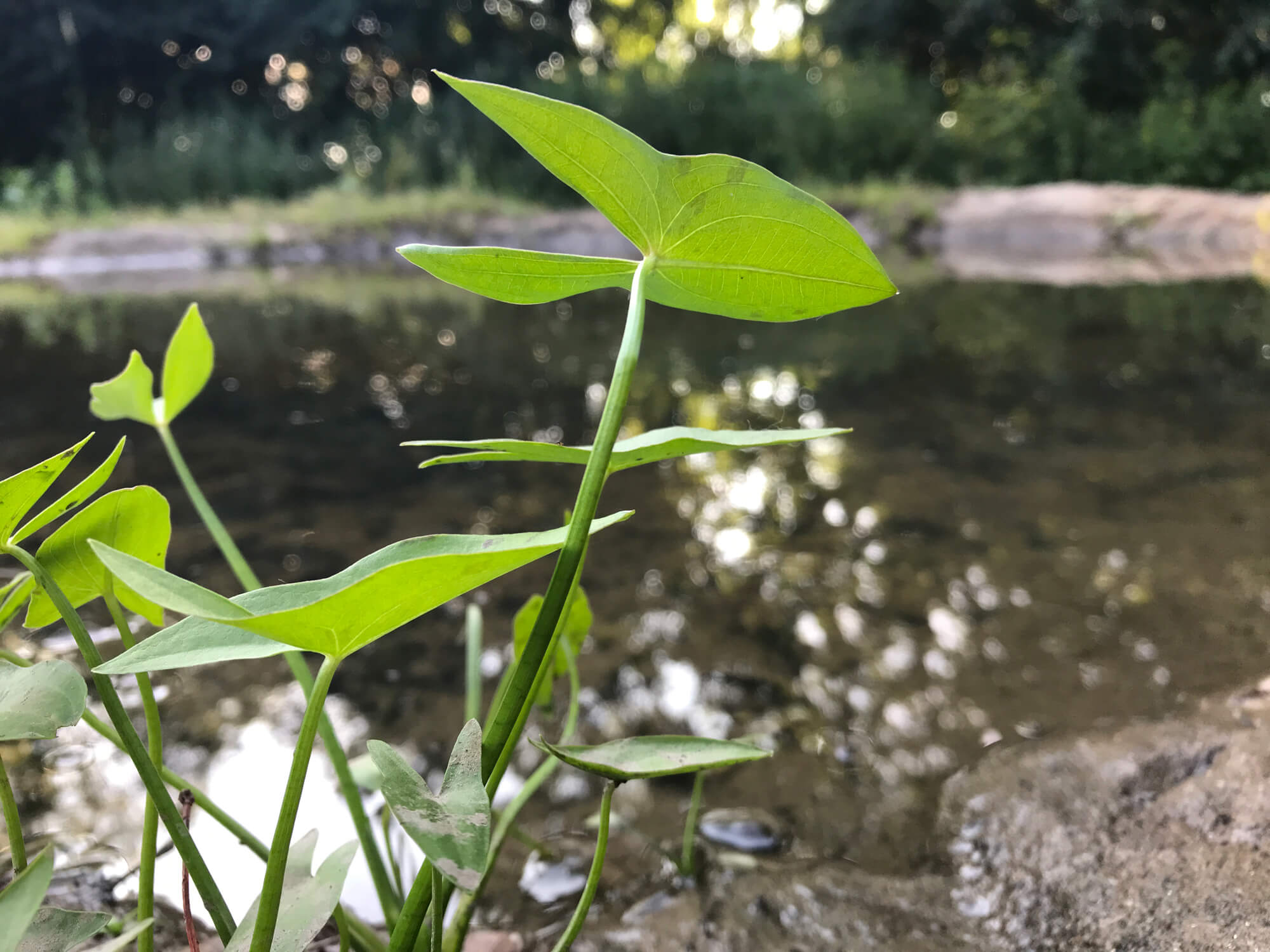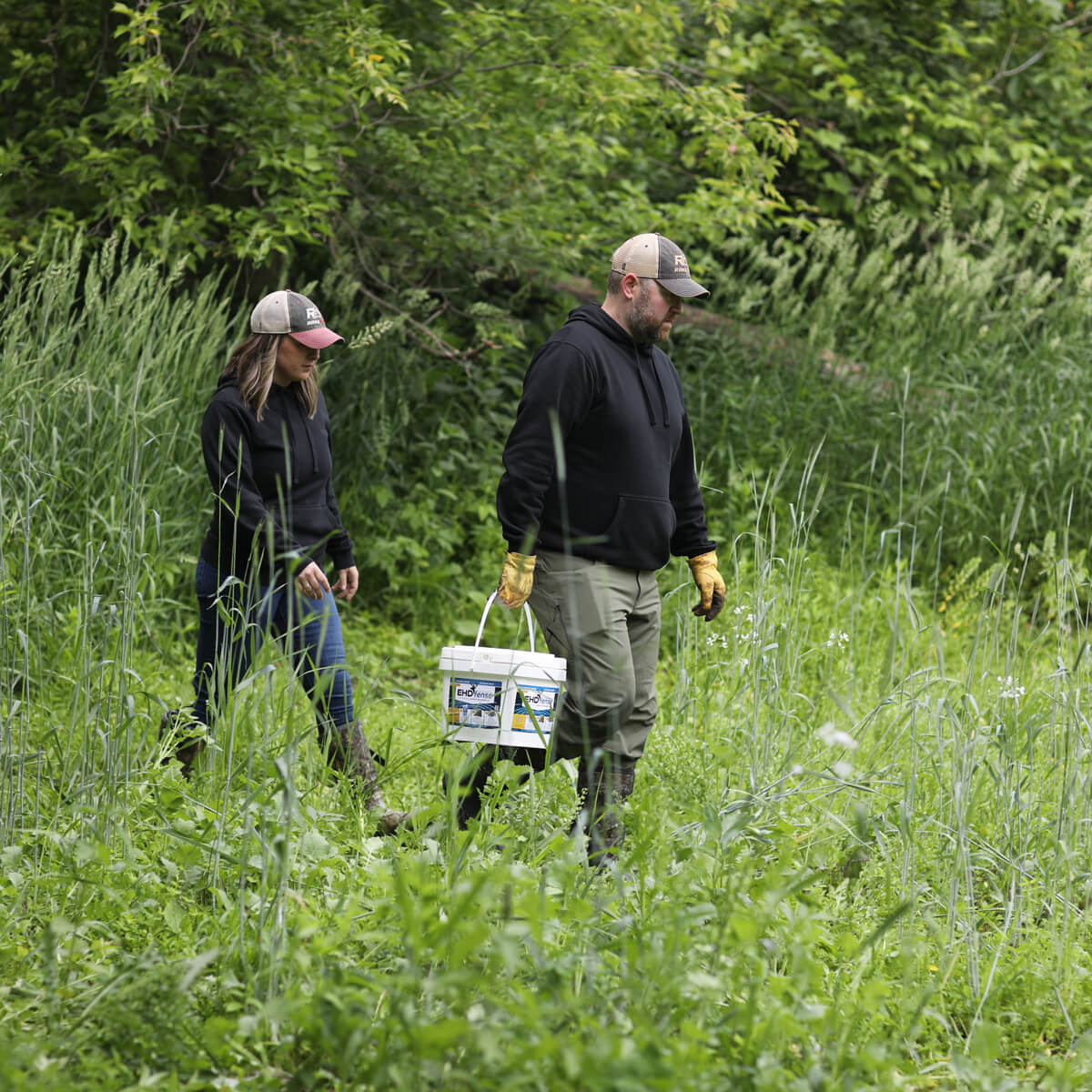Epizootic Hemorrhagic Disease (EHD) in Whitetail Deer: History, Transmission, and Impact
By: Zachary D. Haas, Senior Aquatic Biologist
Epizootic Hemorrhagic Disease (EHD) is one of the most significant and deadly viral illnesses affecting whitetail deer across North America. Caused by a virus in the Orbivirus genus, EHD has had a negative impact on deer populations, wildlife management strategies, and hunting practices. Outbreaks of the disease are typically seasonal and occur during late summer and early fall, particularly in warm, dry years when the midge responsible for spreading the virus are most active.
History of EHD in North America
The history of EHD in North America dates back to 1955, when it was first identified in whitetail deer in New Jersey. Although it was initially considered a disease of southern climates, where warm temperatures support the lifecycle of the biting midges that transmit the virus, EHD has steadily expanded its geographic range over the past several decades. Outbreaks have been recorded across the Midwest, Northeast, and even into parts of the Northwest. Notable events include a widespread outbreak in 2007 that affected Indiana, Illinois, and Missouri, and an especially devastating episode in 2012 that was reported in over 30 states. These outbreaks highlighted the growing threat EHD poses to deer populations and underscored the need for increased awareness and monitoring.
How the Virus Affects Deer
EHD is caused by the epizootic hemorrhagic disease virus (EHD), which is closely related to bluetongue which we also have seen devastating impacts from in western states. The virus targets the lining of blood vessels, causing inflammation and hemorrhaging throughout the body. After a deer is infected, the incubation period typically lasts between 5 to 10 days. Symptoms develop rapidly and may include high fever, swelling of the head, neck, eyelids, or tongue, labored breathing, weakness, loss of appetite, and disorientation. In severe cases, deer may die within 36 hours of symptom onset. Some deer develop a chronic form of the disease and may survive but show signs such as sloughed or deformed hooves due to vascular damage. These survivors often carry antibodies that provide some level of immunity against future infections.
The Midge Life Cycle and Disease Transmission
The transmission of EHD is entirely dependent on the Culicoides midge, a tiny blood-feeding insect often referred to as a “no-see-um.” The life cycle of the midge is closely tied to the seasonality of EHD outbreaks. Female midges lay their eggs in moist areas with abundant organic material, such as the muddy edges of ponds, animal dung, or wet soil. The larvae feed on decaying material before entering a short pupal stage and emerging as adults. Adult female midges require blood to reproduce and will bite a range of animals, including deer. When a midge feeds on an infected deer, it can acquire the virus and transmit it to other deer through subsequent bites. Adult midges live for 10 to 20 days, allowing sufficient time for the virus to spread within a deer population. Once the first hard frost occurs, midge populations crash, bringing an end to the outbreak until the next warm season.
Regional Impact on Deer Populations
EHD outbreaks can have varying effects on deer populations depending on the region. In southern states, where the disease is more prevalent and deer have developed partial immunity, mortality rates tend to be lower. Deer in these areas often survive infection with few symptoms. However, in northern states where EHD is rare and deer have little to no immunity, outbreaks can cause high mortality rates. In some localized areas, over 50% of the deer population may be lost in a single outbreak. These sudden die-offs can disrupt hunting seasons, reduce harvest numbers, and have ripple effects throughout the local ecosystem. In the aftermath of an outbreak, state wildlife agencies often reduce hunting quotas to allow herds to recover, but recovery can take several years depending on the severity of the loss and reproductive rates.
Long-Term Ecological and Economic Effects
In addition to immediate mortality, EHD can have long-term implications. The sudden reduction in deer numbers can alter predator-prey relationships and change vegetation patterns due to decreased browsing pressure. Economic impacts are also significant, especially in areas where deer hunting contributes to local economies. Deer license sales, equipment purchases, and tourism may all decline following a large-scale outbreak. On a biological level, repeated EHD outbreaks may also exert evolutionary pressure on deer populations, favoring individuals with genetic traits that confer some resistance to the virus.
Human Safety and Wildlife Management
Fortunately, EHD poses no direct risk to humans, and it cannot be transmitted through handling or consumption of venison. That said, meat from visibly sick animals should never be consumed, and hunters are advised to contact their state wildlife agency if they suspect EHD in deer they observe or harvest. In the absence of a vaccine or effective treatment for wild deer, management of EHD focuses on monitoring, habitat modification, and public education.
As for wildlife management, one important and often overlooked method for reducing EHD transmission is improving water quality and managing deer access to water sources. Because Culicoides midges breed in shallow, stagnant, and organically rich water—such as muddy puddles, livestock troughs, or dried-up pond edges—landowners and wildlife managers can limit midge populations by enhancing drainage, eliminating unnecessary standing water, and keeping water sources clean. Installing well-maintained, deeper water sources with clean banks and stable edges helps discourage midge breeding and reduces the likelihood that deer will congregate in high-risk areas.
Additionally, distributing water sources more widely across a landscape can minimize crowding of deer, which reduces the risk of a localized outbreak. When too many animals gather around the same poor-quality watering holes, conditions become ideal for disease transmission. By encouraging better land stewardship, improved pasture drainage, improved water quality, and properly designed wildlife watering systems, landowners and managers play a key role in disrupting the EHD transmission cycle before it takes hold.
Reducing the availability of stagnant, poor quality water sources where midges breed has helped lower transmission rates. Continued research into midge behavior, deer immunity, and virus evolution is also vital to improving response strategies and anticipating future outbreaks.
Conclusion
In conclusion, EHD is a serious viral disease with a long and complex history in North American whitetail deer populations. Driven by the seasonal activity of biting midges and exacerbated by environmental factors like drought and climate change, EHD continues to challenge wildlife managers and hunters alike. Its spread into new regions underscores the importance of vigilance, research, and adaptive management. Though EHD is a natural disease that has likely existed for centuries, its increasing frequency and severity call for renewed attention to preserving the health and sustainability of one of North America’s most iconic wildlife species.
References
Stallknecht, D. E., & Howerth, E. W. (2004). Epidemiology of Bluetongue and Epizootic Hemorrhagic Disease in Wildlife: Surveillance Methods. Veterinary Italia, 40(3), 173–180.
Southeastern Cooperative Wildlife Disease Study (SCWDS). (2021). Hemorrhagic Disease in Deer. University of Georgia. Retrieved from: https://www.scwds.org
Michigan Department of Natural Resources. (2022). Epizootic Hemorrhagic Disease (EHD) in Michigan. Retrieved from: https://www.michigan.gov/dnr
USDA Animal and Plant Health Inspection Service (APHIS). (2020). Bluetongue and Epizootic Hemorrhagic Disease. Retrieved from: https://www.aphis.usda.gov
Missouri Department of Conservation. (2023). Deer Diseases: Hemorrhagic Disease (HD). Retrieved from: https://mdc.mo.gov
Yabsley, M. J., & Nettles, V. F. (2007). Emerging Infectious Diseases in Free-ranging Wildlife. Revue Scientifique et Technique, 26(3), 559–573. doi:10.20506/rst.26.3.1766
Mayo Clinic. (2023). Can I get sick from eating venison with EHD? https://www.mayoclinic.org
Centers for Disease Control and Prevention (CDC). (2021). Hemorrhagic Disease in Animals. https://www.cdc.gov


Share:
Defending Against EHD